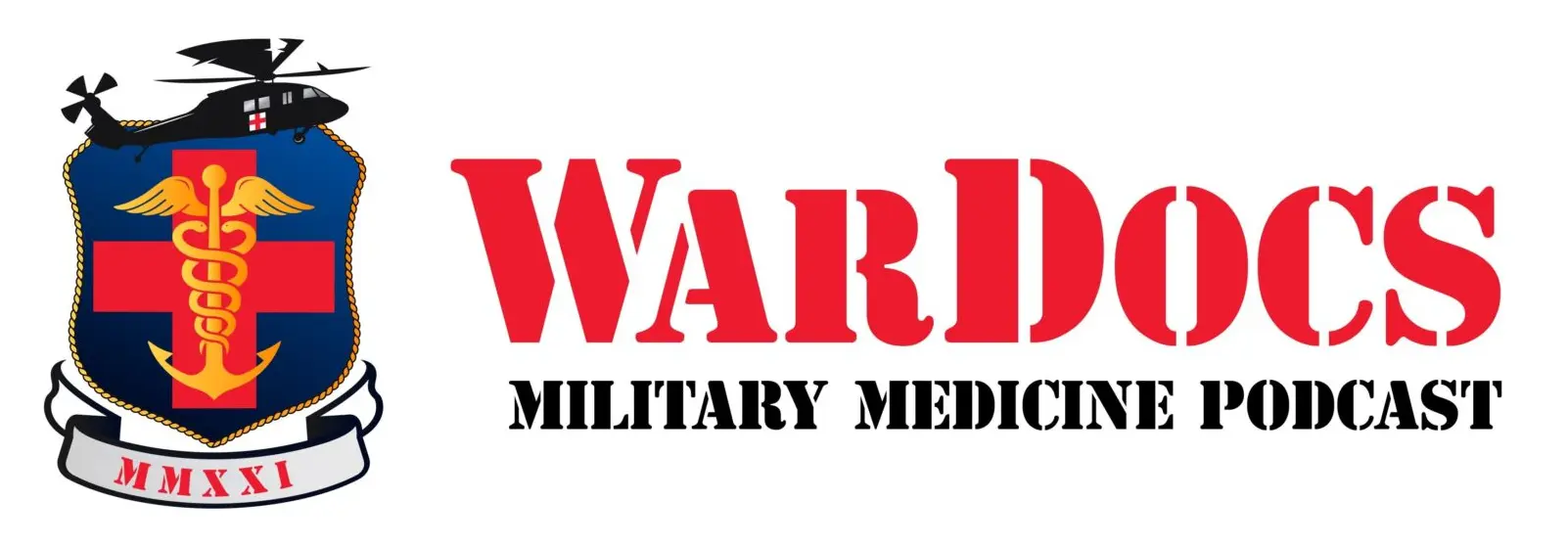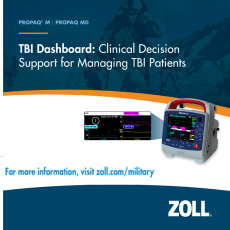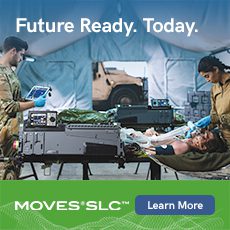Addressing Military Health Readiness During A Global Crisis
HON Thomas McCaffery
Assistant Secretary of Defense
for Health Affairs
From Combat & Casualty Care, Summer 2020
HON Tom McCaffery was sworn in as the Assistant Secretary of Defense for Health Affairs on August 12, 2019.
In this role, HON McCaffery is the principal medical advisor to the Secretary of Defense. He administers the Military Health System (MHS) $50 billion Defense Health Program (DHP) budget and is responsible for ensuring the global delivery of quality, cost effective health care to 9.5 million Service Members, retirees, and their families. HON McCaffery oversees the Defense Health Agency and the Uniformed Services University of the Health Sciences.
HON McCaffery has extensive experience in the health care industry. Most recently, he served as Vice President, California State Partnerships at Blue Shield of California. In this capacity, he led the day-to-day activities governing Blue Shield’s post-acquisition integration of the Care1st Health Plan, a 500,000 member health plan serving Medicaid and Medicare members. Prior to that role, he served as Vice President of Blue Shield’s CalPERS sector, where he led a team responsible for all strategic initiatives, product development, marketing, pricing, and operational functions for the 400,000 member California Public Employees Retirement System (CalPERS) account.
Prior to his tenure at Blue Shield, he served as Chief Deputy Director of the California Department of Health Services, California’s public health and health care services agency. HON McCaffery also served as Senior Vice President / Chief Operating Officer at the Alliance of Catholic Health Care, the public policy and advocacy organization representing California’s Catholic health systems and hospitals. Earlier in his career, he served on the staff of the Washington, DC Office of the Governor of California.
Active in many community organizations, HON McCaffery has served on a number of healthcare, education and children’s program non-profits in the Sacramento area.
HON McCaffery graduated from the University of Notre Dame with a degree in Government and International Relations and holds a Master’s Degree in Public Policy from the University of California at Berkeley.
Combat & Casualty Care spoke with the Honorable Tom McCaffery, Asst. Sec. of Defense for Health Affairs, regarding his take on some of DoD’s current and ongoing challenges as relates to force health and maintaining readiness for unexpected health crises such as COVID-19.
C&CC: As the principal medical advisor to the Secretary of Defense, what are some of your primary concerns surrounding the U.S. military and current COVID-19 pandemic crisis?
Mr. McCaffery: Secretary Esper has clearly outlined the Department’s priorities in combatting COVID-19: protecting our Servicemembers, civilian employees, and families; safeguarding our national security capabilities; and supporting the whole of nation response. The Military Health System is serving on the frontlines to support these priorities. While supporting the pandemic response, at the same time, we must advance the mission of military medicine: ensuring our troops are healthy and ready to fight and providing platforms for the uniformed medical force to sustain their medical skills. We also must ensure the 9.5 million eligible TRICARE beneficiaries continue to receive high quality care.
The pandemic has required the Military Health System to quickly pivot and adapt to this unprecedented fight. Agility and adaptiveness, hallmarks of military medicine, have proven essential in the pandemic response. We’ve dramatically increased the Department’s laboratory testing capacity and spearheaded data tools to predict surges in cases, enabling better planning for resourcing and logistics. We’ve ramped up virtual health capabilities and established drive-up testing sites and pharmacy curbside delivery. And we’ve implemented policies to minimize exposure risk to both patients and providers, including a temporary pause in elective procedures, as well as ongoing subject matter expert support to develop Force Health Protection guidance for the Department.
These measures, and many more, have contributed to a comprehensive Military Health System response that supports the warfighter, cares for the patient, and advances the Department’s readiness mission. We remain focused on supporting the Department in this complex and challenging environment with the best military medicine has to offer.
C&CC: With the evolution of military health care capabilities such as MHS GENESIS, do you see any changes in priorities coming out of the fight against COVID-19 and the resulting health impact to DoD/DoD support personnel?
Mr. McCaffery: The COVID-19 pandemic has, in many cases, helped reveal where military medicine is excelling and where we have opportunities for improvement. We are cataloguing lessons learned and best practices from our response efforts. We’ve already seen the immense value of certain tools to better support the warfighter and patient. For instance, in locations where the Department has deployed its new electronic health record, MHS GENESIS, we’re leveraging data to better project, monitor, and engage with patients on health needs and follow-up care. This experience has underscored the high priority we have placed on system-wide deployment of MHS GENESIS. It is a key tool to enable the Military Health System to function as a true, integrated medical enterprise that can effectively support military requirements. We are also taking a hard look at how to expand services like virtual health capabilities to enhance access to safe, effective care for patients while minimizing exposure risk. We will continue to deploy critical military medical combat support assets like health surveillance and outbreak monitoring tools, and we’ll ensure ample blood supplies, training, combat casualty care, and more.
The pandemic also has underscored the key role military medicine research and development plays, not only in support of military missions, but also how our work can be leveraged to support requirements of the larger society. The Department has extensive experience in rapid innovation and medical advances, from a battlefield evacuation system that became the foundation for the modern emergency medical services system, to advances in damage control surgery and trauma management that have informed nationwide trauma practice.
The Department’s long history of investments in research and development for medical countermeasures remains a critical priority to ensure readiness of the force and direct support to the warfighter. That’s why the Military Health System has enhanced partnerships across the Department in implementing a strategy to accelerate development of COVID-19 vaccines and therapeutics. This joint effort capitalizes on our enormous capacity to develop, manufacture, and distribute medical countermeasures to the force. Antibody therapeutics could play a vital role in supporting our operational missions with prophylaxis measures and post-exposure treatment options. The Military Health System’s commitment to continue delivering on cutting-edge research and development, both for the military and for broader domestic support efforts, remains unwavering.
C&CC: How has the COVID-19 response impacted the Military Health System’s reform efforts, and what has the enterprise learned from the pandemic as you move ahead with military medicine transformation?
Mr. McCaffery: Prior to COVID-19, the Military Health System was undergoing historic reform – the most significant change from the services in decades. We were well in to the implementation of the Department’s plan for the transition or authority, direction and control of all military hospitals and clinics to the Defense Health Agency; reinvigorating our focus on readiness within the direct care system; and optimizing the size, composition, and competency of the military medical force. At the same time, we were implementing technological tools to set us up for a successful future, having launched the Department’s new state-of-the-art integrated electronic health record, MHS GENESIS, at four new sites this past September. We paused our MTF transition effort to fully focus on DoD’s response to COVID-19, but are now assessing the Departments ability to resume these activities, with reassessments every 90 days to determine when we can resume these important initiatives.
In the meantime, we are learning key lessons from the COVID-19 response that are fine-tuning our approach, and, in many cases, reinforcing the value MHS reforms will bring. Over recent months, the MHS has quickly pivoted to leverage every element of military medicine to support the Department’s response efforts. In doing so, we’ve seen the value of having a single entity – the Defense Health Agency – for developing uniform guidance and directives related to business and administrative practices. We’ve also seen the value of enabling the military departments to focus more intensely on combat readiness for our medical personnel and for the operational force.
C&CC: In terms of personnel readiness as it relates to overall defense health, what are some likely re-prioritizations as a result of the war on COVID-19?
Mr. McCaffery: COVID-19 is a real-time test for how we leverage our medical capabilities to prepare, protect, and care for the force, and advance the Department’s priorities. And we are learning critical lessons along the way. COVID-19 has reinforced the importance of an integrated military medical enterprise – one that can meet new challenges with agility and ingenuity, and expeditiously apply best practices and lessons learned for decision-making that will benefit the warfighter, the patient, and the Department. In the past few months, the Military Health System has dramatically increased DoD laboratory testing capacity; spearheaded predictive modeling tools to plan and prepare for case surges; ensured military medical logistics deliver the life-saving medical equipment to the right place and at the right time; ramped up virtual health capabilities; established drive-up testing sites; and implemented policies and protocols to minimize exposure risk to patients and providers. Each of these areas reflects a truly integrated system of health and readiness – a gold standard in integrated organization that we continuously strive to achieve.
C&CC: Any final thoughts on military medicine’s COVID-19 response to date?
Mr. McCaffery: Since the inception of military medicine, the Military Health System has been system-trained to pivot to meet new threats. The COVID-19 response has demonstrated the unique application of military leadership experience in leading through change as an immense asset for any challenge our nation faces. As early as Walter Reed’s breakthrough in yellow fever in the 1900s, military medicine played a critical role in reversing the devastating trend of more soldiers dying from disease than from combat. Today, we continue to see military medicine’s successes impacting the battlefield – in recent years, we’ve achieved the highest battlefield survival rate in history despite increases in injury severity scores. COVID-19 is no different: the Military Health System has the expertise, capabilities, and preparation to face whatever comes our way.
As we confront today’s invisible enemy, we are applying decades of knowledge in how to adapt to changing security environments, bringing innovative, agile expertise and rapidly deployable resources to the fight, and mobilizing our military medical professionals to the place where they can do the most good: treating patients. At the onset of the pandemic, the Department mobilized doctors, nurses, and medical technicians – both Active Duty and Reserve – to provide the high-end capability of the USNS Comfort, the USNS Mercy, large capacity within the Javits Center, and augmentation of medical professionals directly to local hospitals. This is just one example of the Military Health System’s contributions to the concerted national response to serve and support hard-hit communities, all while delivering on our mission to support the warfighter and care for our beneficiaries.
Across the Military Health System, our people are making a difference. The men and women who make up our military medicine enterprise are delivering today, serving on the frontlines in hospitals and clinics and, labs, and behind the scenes to advance the priorities of the Department to protect our people, maintain readiness, and support the nation.























